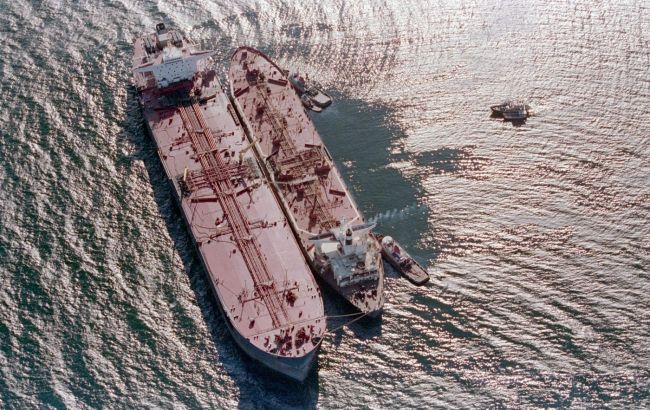Russian shadow fleet includes 1,000 tankers - Ukraine's intelligence
 Photo: Russia's shadow fleet includes 1,000 tankers (Getty Images)
Photo: Russia's shadow fleet includes 1,000 tankers (Getty Images)
Russia's shadow fleet is a thousand old tankers that carry Russian oil outside the established price cap and are not insured by Western companies. They cost Moscow about $10 billion, according to Defense Intelligence of Ukraine.
“At present, the Russian shadow fleet includes up to 1,000 units of mostly outdated vessels (with a total deadweight of more than 100 million tons) that export oil and oil products. In 2023, there were about 600 of them,” the DIU said.
Since setting the price cap on Russian oil in December 2022, Moscow has spent more than $10 billion on the purchase of shadow fleet tankers.
“These vessels ensure the export of about 70% of Russian crude oil and petroleum products transported by sea,” the military intelligence says.
Countries of registration
Most of the shadow fleet tankers are registered under the flags of Panama, Gabon, Cook Islands, Liberia, Marshall Islands, etc.
The owners are registered in China, India, the Marshall Islands, the Seychelles, the UAE, Greece, and a number of other countries. Management companies are located in the UAE, Greece, China, Türkiye, and the Seychelles, among others.
These vessels often change their registration and name to make them difficult to identify. They reload oil onto other tankers in the offshore zone, try to hide their routes, and turn off the automated identification system (AIS) on certain parts of their route. To prevent the Russian origin of the oil from being established, they also mix it with other grades in the tankers.
Demand for Russian oil
There is not only supply but also demand for such oil. According to the DIU, some countries are interested in importing Russian oil for refining and exporting it as finished petroleum products to foreign markets. These are, for example, China, India, and Türkiye. The sale of petroleum products made from Russian oil is not subject to the ban.
In early January, under President Joe Biden, the United States imposed new sanctions against Russia's shadow fleet, including 183 tankers carrying Russian oil, Gazprom Neft, and a number of insurance companies that serve them. Given that Trump has not lifted these sanctions since taking office, there is reason to believe that this package of measures was coordinated between the former and current presidential teams.
According to CSIS and Bloomberg, out of the 3.5 million barrels that Russia transported per day in 2024, 1.5 million were on sanctioned tankers. The main buyers - India and China - stopped accepting the vessels under the restrictions, fearing secondary sanctions.
Sanctions against Moscow
As a result of the sanctions, Russian oil exports are expected to decline by 15% in the short term, the DIU noted. Besides, Moscow will have to increase the discount on its oil for its buyers and revise its production targets downward.
However, there is still work to be done in this area, as US sanctions have affected only a part of the entire Russian shadow fleet. To block the Kremlin's scheme, it is necessary to find a mechanism to track the real route of shadow vessels, impose sectoral sanctions and asset freezes on companies operating these tankers, and ban them from entering ports, territorial waters, and international straits.
As a reminder, German Foreign Minister Annalena Baerbock said that the rusty tankers of the Russian shadow fleet pose a threat to the EU.
Read more about the pressure on Russia in RBC-Ukraine's article Peace through strength: How Trump can force Putin to end Ukraine war and start negotiations.

